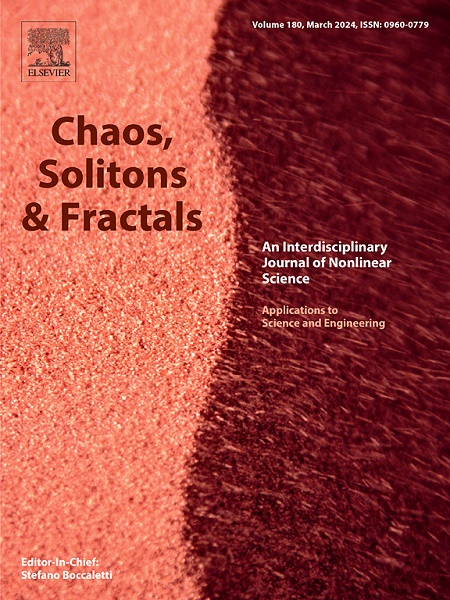基于基序熵的非对称耦合下多层网络鲁棒性评估
IF 5.6
1区 数学
Q1 MATHEMATICS, INTERDISCIPLINARY APPLICATIONS
引用次数: 0
摘要
非对称耦合是许多现实世界多层网络的定义特征,它是由固有的结构特性而不是随机配置引起的。这些不对称关系在强度和方向上各不相同,显著影响网络动力学和鲁棒性。本研究提出了一个量化这些耦合的新框架,并引入了基于高阶拓扑相互作用的基序熵作为评估网络鲁棒性的度量。通过对一个综合和三个经验多层网络的广泛数值分析,我们探讨了系统不同层的不对称耦合和目标攻击对其鲁棒性的影响。我们的研究结果表明,不对称耦合增加了级联故障的复杂性,故障传播的动力学强烈依赖于攻击所针对的特定层。值得注意的是,具有较高比例弱耦合的网络表现出增强的鲁棒性,因为这些层间依赖关系分散了级联故障的影响,降低了广泛中断的风险。这些发现强调了非对称耦合在决定网络稳健性方面的关键作用,弱耦合作为缓冲机制,抑制了级联故障的严重程度,而强耦合则增加了目标中断下的脆弱性。本文章由计算机程序翻译,如有差异,请以英文原文为准。
Assessing multilayer network robustness under asymmetric coupling using motif entropy
Asymmetric couplings are a defining feature of many real-world multilayer networks, arising from inherent structural properties rather than random configurations. These asymmetric relationships, which vary in both strength and direction, significantly influence network dynamics and robustness. This study presents a novel framework for quantifying these couplings and introduces motif entropy as a metric for assessing network robustness, based on higher-order topological interactions. Through extensive numerical analyses of a synthetic and three empirical multilayer networks, we explore the impact of asymmetric coupling and targeted attacks on different layers of the system on its robustness. Our results reveal that asymmetric coupling increases the complexity of cascading failures, with the dynamics of failure propagation being strongly dependent on the specific layer targeted by the attack. Notably, networks with a higher proportion of weak couplings exhibit enhanced robustness, as these interlayer dependencies disperse the impact of cascading failures, mitigating the risk of widespread disruption. These findings underscore the pivotal role of asymmetric coupling in determining network robustness, with weak couplings acting as a buffering mechanism that dampens the severity of cascading failures, while strong couplings heighten vulnerability under targeted disruptions.
求助全文
通过发布文献求助,成功后即可免费获取论文全文。
去求助
来源期刊

Chaos Solitons & Fractals
物理-数学跨学科应用
CiteScore
13.20
自引率
10.30%
发文量
1087
审稿时长
9 months
期刊介绍:
Chaos, Solitons & Fractals strives to establish itself as a premier journal in the interdisciplinary realm of Nonlinear Science, Non-equilibrium, and Complex Phenomena. It welcomes submissions covering a broad spectrum of topics within this field, including dynamics, non-equilibrium processes in physics, chemistry, and geophysics, complex matter and networks, mathematical models, computational biology, applications to quantum and mesoscopic phenomena, fluctuations and random processes, self-organization, and social phenomena.
 求助内容:
求助内容: 应助结果提醒方式:
应助结果提醒方式:


